A Walk in Over-The-Rhine with Maddie McGarvey
"If you don’t really care about the people you photograph, it shows in your pictures."
“You’re not using portrait mode, are you?”
I’m taking a photo of Maddie McGarvey in Over-The-Rhine, a neighborhood in Cincinnati, Ohio, and I am indeed using portrait mode.
“Wait, what’s wrong with portrait mode?”
“God. Of course you’re using portrait mode. Old people love portrait mode.”
I shoot her an incredulous look.
“What? It doesn’t look good! Simply because it makes the background blurry doesn’t mean the photo looks good.”
“It makes people look good!”
“I disagree. I think it makes people look weird.”
We have driven from Columbus to Cincinnati because Maddie is photographing President Joe Biden's town hall for CNN. Apparently she won’t be using portrait mode. That day a photo Maddie took of Nina Turner, who is running for Congress in Ohio's 11th District, is on the front page of the The New York Times.
While we walk past the colorful murals and gorgeous architecture that can be found throughout OTR, I ask Maddie if it’s her first time making the paper’s front page.
Her response is short and to the point: “No.”
Isaac: Why photography?
Maddie McGarvey: It started because I really loved art, but I was a terrible painter. I was a terrible illustrator. I couldn’t do art at all. But I wanted to do something creative. I don’t have a great, “My grandfather handed me his camera when I was three years old and I never looked back” type story. I was simply a lost teenager who didn’t really know what she wanted to do. Didn’t really have her thing. But in college I decided to major in photojournalism. And that was big for me. It opened me up to how versatile this job, and this art form, can be. Realizing that you can meet people, document these intimate moments in their lives—and then, say, at a news event, you can be at the forefront of everything that’s happening. Capturing history in real time. So I started that way, and I really can’t picture doing anything else at this point.
I: So no camera from your grandfather when you were three. But do you remember when you first started taking photos? Taking an interest in photography?
MM: I started in high school, using my dad’s point and shoot. And I was terrible. But everybody starts out terrible, and you slowly get better the more you do it. Then—in college—I started documenting families and focusing on social issues. I became more confident in what I was doing and the stories that I wanted to tell. I began photographing this girl who was being raised by her grandparents—I was nineteen years old at the time. And this girl, Sonya, was eight or nine. She had severe PTSD. She’d been abused by her parents. But she had this clarity—she was definitely helping raise her younger siblings. So it started as a college project, but I ended up photographing Sonya on and off for about ten years. She graduated from high school last year.
So that was the first big story I worked on as a photographer where I realized, “These people are changing my life.” I’m watching this child grow up. And documenting it every step of the way. And sometimes I’d go over there and simply watch TV with Sonya. Or help babysit. They became a second family to me. Now, obviously not every story or assignment can be like that. But I realized while I was documenting Sonya’s story that photography allows me to meet people and opens up my world in a way that I can’t imagine any other career really doing.
I: Did you ever finish that project?
MM: I did. It’s called “Legacy of Daughters.” The last time I saw her I took her senior pictures.
I: You mentioned your father’s “point and shoot,” do you remember the first camera you owned yourself?
MM: It was a Canon Rebel something. Pretty basic camera. Nothing fancy. There are photographers who are very much into gear, but I am not one of them. I tell people all the time, “You can be an amazing photographer just using your phone.” Whatever camera you have on you is fine. It’s about finding your vision.
I: As long as you’re not using portrait mode.
MM: As long as you’re not using portrait mode, correct.
I: So “Legacy of Daughters” was one of your first long-term projects. But you’re a professional photographer who makes a living taking photographs for The New York Times, The Washington Post, National Geographic—all these major outlets. What was, in your opinion, your first big break?
MM: There wasn’t one big break. It was ten years of being persistent. People think you become an overnight success, but you become an overnight success over ten years of grinding. I got out of college and didn’t know what I wanted to do. Didn’t know where I wanted to go. Didn’t know what my next step was. I was a bit aimless, but eventually got a job at a small newspaper in Vermont. So I moved there. I didn’t know anyone, and thus was a bit miserable. Plus it was a horrible job. They had me photographing five assignments a day, while also writing and doing video. So I cut my teeth there, for better or worse.
Then, after a year of that, I got laid off and came back to Ohio to freelance. But I would say the first couple of years freelancing I was simply unemployed. Living off unemployment and maybe photographing an assignment a month. Taking on a lot of shit that I didn’t want to do. Weddings. Corporate events. Taking on any job, so long as I was paying the bills—paying some of the bills—with photography. It was slow going, but I still felt like I was moving in the right direction.
So truly, there was no big break. It was simply persistence. Not giving up on photography. Because—eventually—an assignment a month turned into two assignments a month. And then three. And it started to snowball. And that’s not to say there weren’t assignments along the way that made me feel good. Made me feel like I should stick with it. For example, photographing a cover story for TIME—about teachers in America and how they’re severely underpaid—was incredibly encouraging.
But more than a big break I would chalk my career up to doggedness and being based here in Ohio. A lot of people think you have to move to New York, or Los Angeles, or D.C. to make it as a photographer. And don’t get me wrong, those are great places to make it as a photographer. But I would argue you can also have a fulfilling photography career if you set up shop in a place that you are passionate about and know well—and for me that’s Ohio. Ohio is my home. So I care about covering my own community, and covering these states around Ohio that I know really well—so I’m not simply parachuting in. There’s always news here—and in Kentucky and in Michigan and in Indiana, etc.—so I’m always traveling to those places. Because these are the areas I deeply understand and where there are always stories to tell.
I: Speaking of the type of stories that can be found here—especially in Ohio—you do a lot of politics. A lot of rallies. We’re in Cincinnati right now because you’re photographing Biden’s CNN town hall. What do you love about the campaign trail? Or—put a different way—what do you enjoy about capturing political moments?
MM: It’s always a challenge. Because politicians—and the people around politicians—always want the press to make them look good, right? So they’re always trying to control the situation. To show themselves—or show their candidate—in a good light. So my job as a photojournalist is to find those unexpected moments. Where the politician isn’t simply behind the podium, wearing a smile. So it’s a challenge. But I like that challenge. I like trying to find something more nuanced to say about a person, visually. A private moment that maybe shows the politician as an actual human being, not a product.
It’s worth noting, though, when I’m at these rallies and events I’m just as interested in—if not more interested in—the supporters. The people who come out. I was in Iowa a bunch during the 2020 election. And to be at a Pete Buttigieg rally and see people crying in the front row. It’s fascinating. They’re putting so much hope into these politicians—that they’re going to change their lives for the better. They feel so passionate about it. Those people can tell you more about politics—and the state of politics in this country—than the politicians can.
I: You also do these intimate portraits. You’re often welcomed into people’s homes. Into their lives—like with your first project. What do you love about photographing people?
MM: What I really enjoy is observing people. Documenting people’s daily life. And that takes a lot of time. And there’s trust involved. These people will be shown in national media, in front of millions of people. So my job is to put them at ease. And I try to open up to them, in the same way that they’re opening up to me. I think that’s only fair. I don’t like to rush things. So I take the time to get to know the people I’m documenting. Because it’s a weird thing. “Hey, can I take photos of you while you’re getting ready for bed?” That’s a weird thing. So it takes time—to build a trust. Because trust is a huge part of it.
I: Do you ever give direction?
MM: Ethically I can’t manipulate scenes. I’m there to observe. To document. Now, if I’m photographing a portrait I can recommend where to stand, and where to look. But that’s it. And only with portraits. Otherwise it’s about capturing the person’s life and I’m simply there with a camera. But I love that. Because I feel like—especially when I build a trust with a person—it’s simply about making people more aware of how other people live. That’s a very rewarding part of the job. When you get to bring attention to a story that nobody really knows about.
I: You recently tweeted about the difficulties women photojournalists—and women journalists in general—face on shoots and in the field. Could you expand a little bit on that?
MM: Last week I was on a shoot in Kentucky and experienced a series of inappropriate comments throughout the day. There’s something about having a camera that attracts attention. Especially when you’re a woman. So a guy yelled out, “You’re way too pretty to be walking here alone.” And then asked, “Are you married?” Now understand, this happens all the time. But it just pissed me off so much. Because it’d already been a day. So it felt like the last straw. But it’s something every single one of my colleagues who are women have to go through when they’re doing this job.
And sometimes it’s coming from one of the people you’re photographing. And I try to be understanding. Because some people don’t get the relationship. Because there you are, being extremely nice. Asking a lot of questions. Taking all of these pictures. So I have definitely—multiple times—had to have the “let’s define this relationship” talk with people I’m photographing. Because people can misinterpret my interest as a journalist for, say, “Maybe she’s into me.” That does happen.
So it’s also about preparing for it. Which is sad. That it’s expected. But my friend Victor Blue—who lives in New York and is a conflict photographer—and I run this workshop, Working Together, about how to stay safe in the field as a woman. Because you are so often asked to go on assignment—alone—to places that sometimes don’t have cell service or where you don’t know anyone. And you feel unsafe. So it’s important to be prepared, to have training. To talk to your peers about their experiences. And not simply harassment in the field or from someone you’re photographing, but also being prepared to deal with sexual harassment within the industry.
Because every step of the way women have to deal with a type of struggle that many of their male peers simply don’t understand. Women journalists have been sexualized in movies, tv shows, and popular culture for years and years and years. Which adds another layer to it. So at times you might be getting it from the person you’re photographing, the environment you’re in, the industry you’re in, and it can be exhausting at best and, to be frank, deadly at worst. To use a heartbreaking example, Swedish journalist Kim Wall. That is the absolute nightmare. So safety is always on my mind.
I: What are some things that you’d like to see outlets, magazines, media companies, etc. do to better protect women photojournalists?
MM: Everyone should get safety training, including freelancers. And that should be paid for by the publications. And editors—of course some of them are very good at this, but not all—editors need to be vigilant when it comes to communication. Because some editors that simply want to know you can get the pictures and that’s it. They don’t realize the shit you have to go through to get those photos for them. So more communication. Plus safety training. And safety clauses in contracts should be standard.
Listen, at this point in my career I’m always going to prioritize my safety. If I feel something is off, or dangerous? I’m out of there. But that wasn’t always the case. Especially when I was younger—in college, right after college. So being clear with photographers—especially young photographers—that it’s ok to walk away. If you feel unsafe you get the fuck out of there. Because some people—a younger version of myself included—are so desperate to prove themselves that they prioritize getting the shot over their own safety. And it doesn’t have to be that way.
I: What was your job like this past year?
MM: I freaked out at first. For all the obvious reasons, of course, but I was also worried I was going to lose all my work. That it would dry up. But that didn’t happen. There was still an election. There was the pandemic itself. Outlets still needed photos. But before the pandemic I was working at an unsustainable pace. Multiple shoots in different cities in a single day. So I do think I was able to find a bit more of a balance during the past year. Because I was starting to feel—not only burnt out, but resentful of photography. And I did not like how that felt at all.
During the pandemic there were a lot more local shoots. So I got a little bit of a break. And explored what balance feels like. A healthy mix of being on the road and being close to home. And that’s something I’m trying to keep in mind. Rest and spending time with the people in my life, that’s just as important—if not more important—as the work.
I: What do you wish more people knew about photography?
MM: I don’t think many people realize the effort that goes into getting the photos that they see every day. The time and the trust—on both the part of the person being photographed and the part of the photographer—it’s a special kind of relationship.
But it’s a relationship that I’m thankful for. Many of the people I photograph have literally changed my life. Because photographers don’t just point and click. We often have long conversations with the people we’re photographing. Spend the day—or longer—with them. They welcome us into their lives and we feel the need to do their story justice. To depict their lives clearly. Honestly. It’s a special relationship.
So there are hardships, of course. And there are bad shoots. But it’s also a job that introduces me to so many different, wonderful people. It’s a job that’s different every single time I do it. Tonight I’ll be taking photos of the President. Next week I’ll be on assignment covering something completely different. So I’m thankful for that. The variety. And I am so thankful for the relationships. What a joy. People trust me to portray them and to tell their story. And that’s a really special thing. I never want to take that for granted.
Because you really have to give a shit to do this job. If you don’t really care about the people you photograph, it shows in your pictures. If they’re opening their lives to me, the least I can do is do their story justice. I want the people I photograph to look at the photos I take and say, “That’s me. She captured my story. She captured me.”
One such person approaches us as we pass a mural in celebration of Henry Holtgrewe, Cincinnati’s strongest man. Saeed Jones and Maddie McGarvey met when Maddie photographed him for a profile in The Washington Post in 2019. After the shoot, Maddie and Saeed became friends. Which is how I, in turn, met Maddie during my last visit to Columbus. I’m in Ohio once again visiting Saeed and when Maddie asked us if we wanted to go on a short road trip with her to Cincinnati we both said yes.
The three of us spend the rest of the afternoon in OTR, looking at shops and admiring the neighborhood’s character. After Maddie departs, Saeed and I stop for cocktails at a charming bar called Nostalgia. Later that night, when Maddie has successfully photographed the CNN town hall, we all meet up for drinks at a bar called MECCA. The setting is beautiful, and the camaraderie between Maddie and Saeed is apparent. I do my best to remember what Maddie said earlier that day, about simply being in the moment. An observer. Capturing a person’s life. I raise my phone up and snap a photo of the two. I don’t use portrait mode.

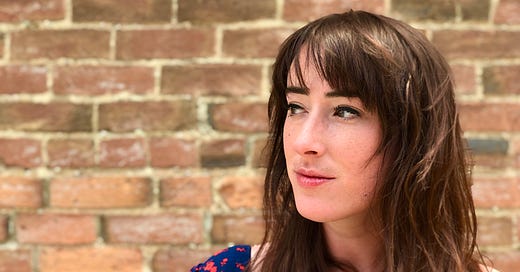


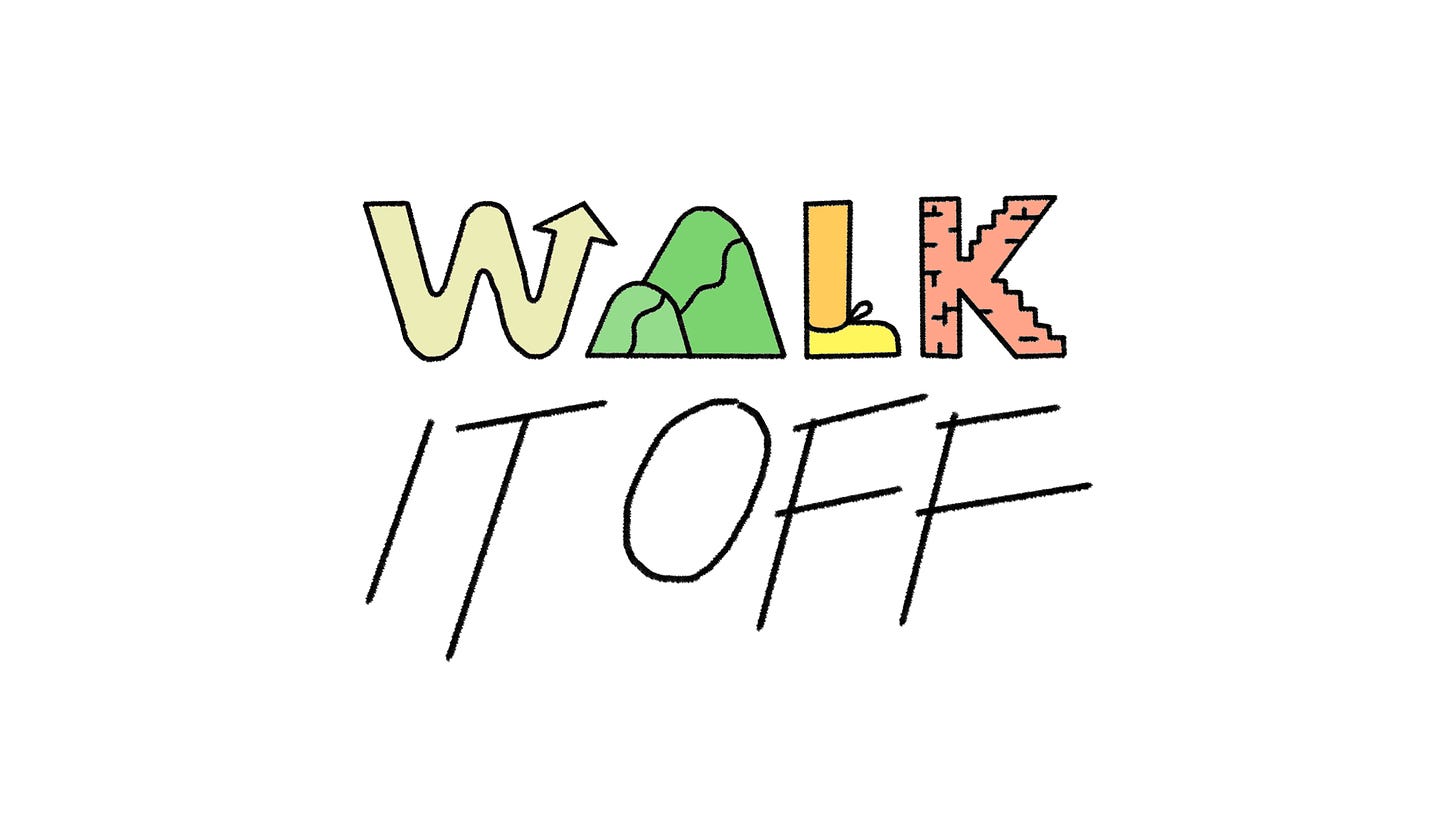



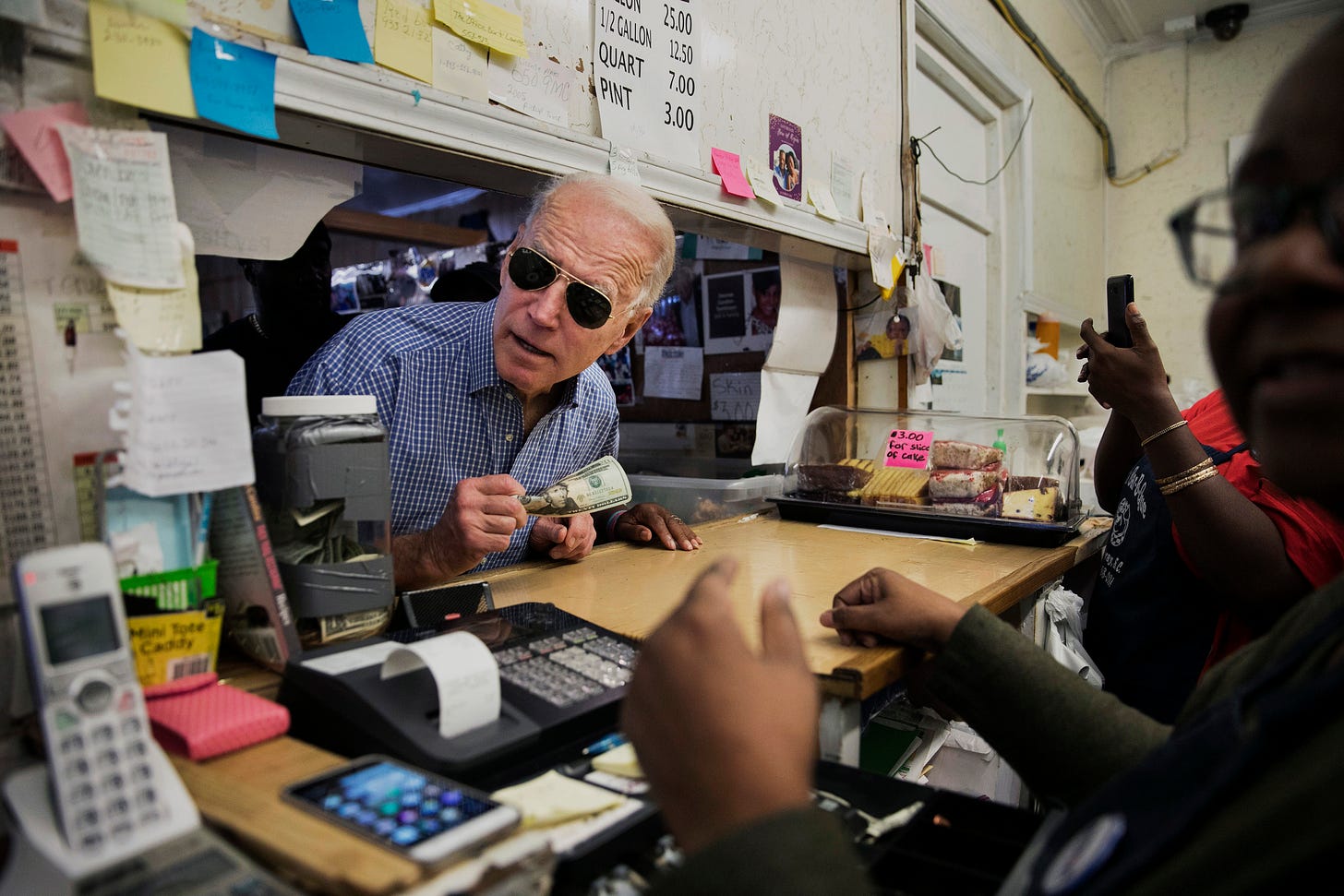



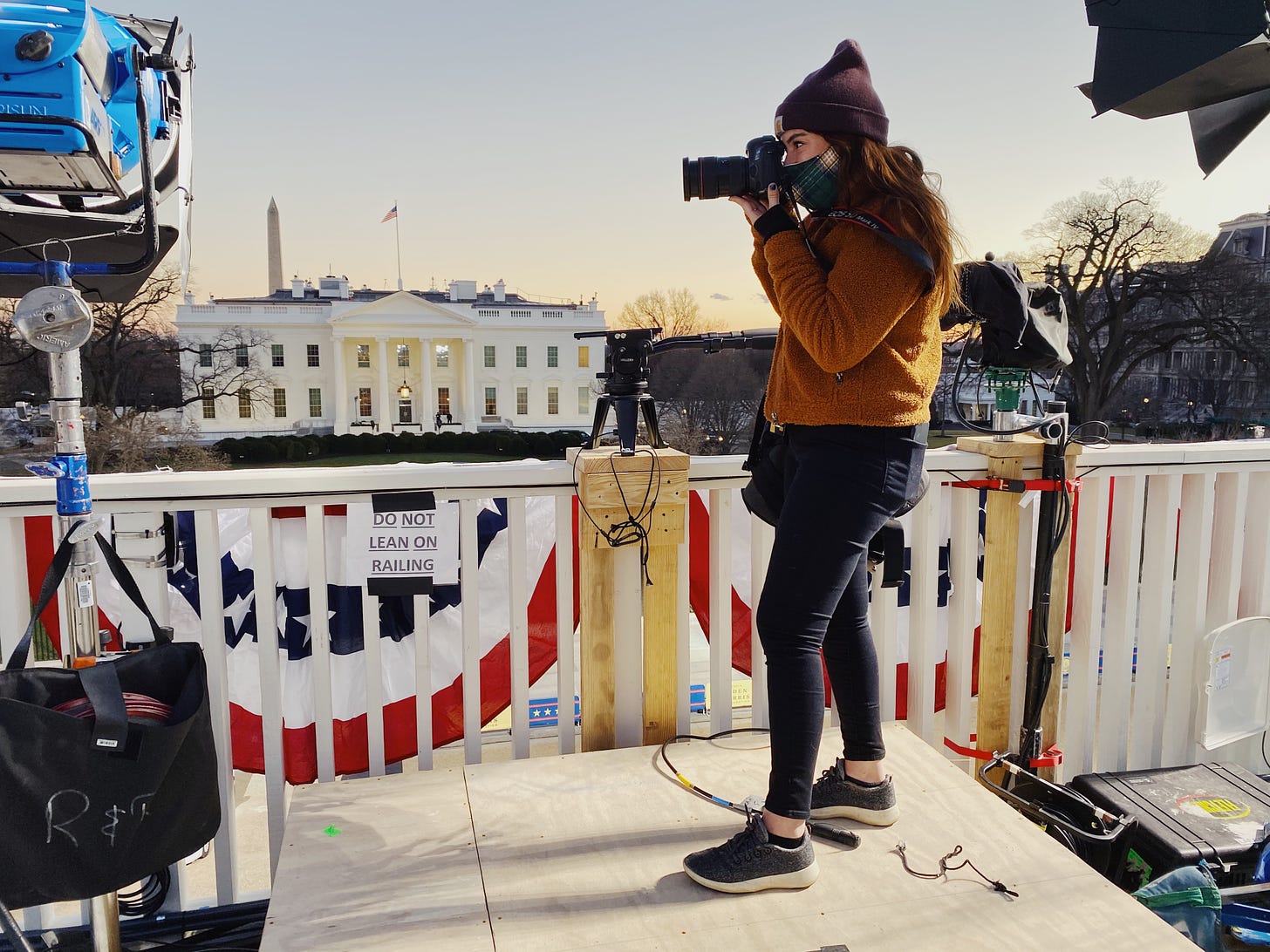
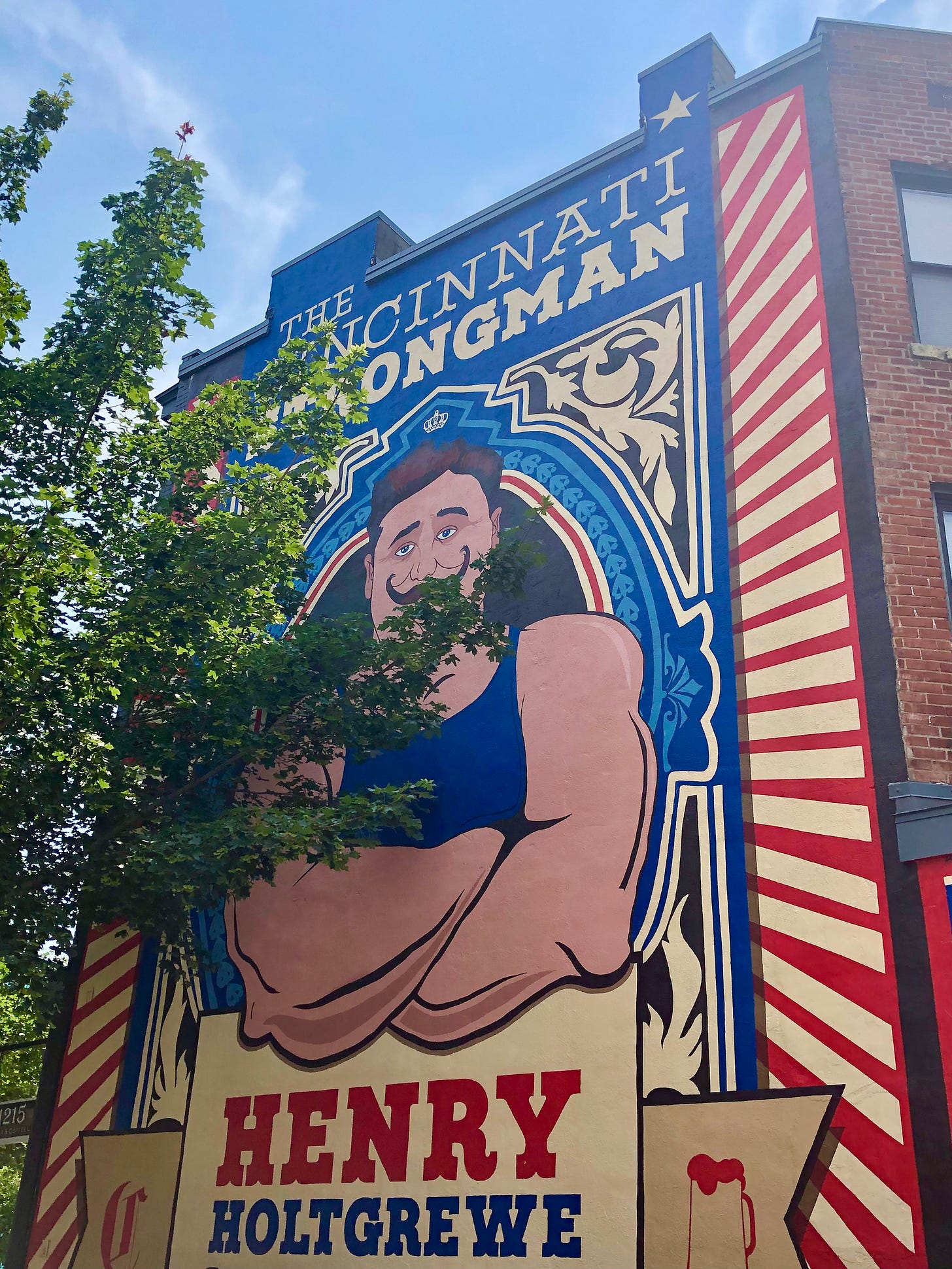

the photo of Maddie and Saeed feels like it was taken on a disposable camera from the 90s, which, in my mind, is the highest of compliments.
Enjoyed reading this about Maddie's story as I've followed her work for a while now.